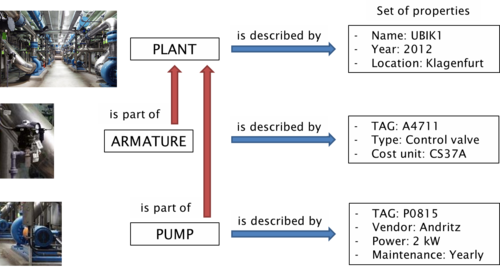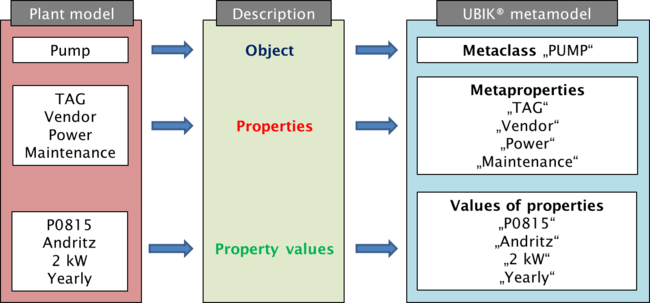Entity Data Model
Contents
Introduction
Objectives
In an industrial environment we quite often need to
- describe an industrial plant consisting of a bunch of different parts, each having a certain purpose and set of properties, and which are related in various ways
- manage process or maintenance data of the plant and its features
- do a high-performance cost-benefit analysis and create key performance indicators
Therefore we need to
|
15 px „Dissemble“ the system into theoretical blocks representing the real as well as intangible parts of the system.
|
Plant picture
Lets start with a simple picture and have a look what blocks we find in a possible plant:
A closer look at the "PUMP" block reveals its properties and property values
Of course, a plant consists of multiple pumps, each described with the same set of properties (TAG, vendor, power, maintenance data). The real pumps in the plant are distinguished by different property values as given in the table.
| Pump | TAG | Vendor | Power | Maintenance |
|---|---|---|---|---|
| #1 | P0815 | Andritz | 2 kW | Yearly |
| #2 | P0816 | Andritz | 5 kW | Monthly |
| #3 | P0817 | Sulzer | 4 kW | Yearly |
We can redefine or extend our objectives by
|
15 px
Design a descriptive model including all required blocks and properties of the system
|
Transition
From the plant picture into UBIK
In summary we can picture the transition from the plant picture into an object- / data-model like
and post our first definition
- UBIK metamodel
- A descriptive model, where objects provide information about the aspects of the data, is also called “Metamodel”.



